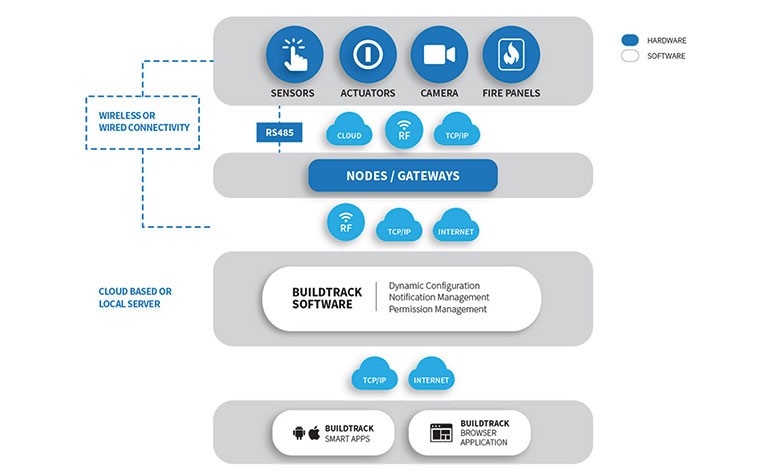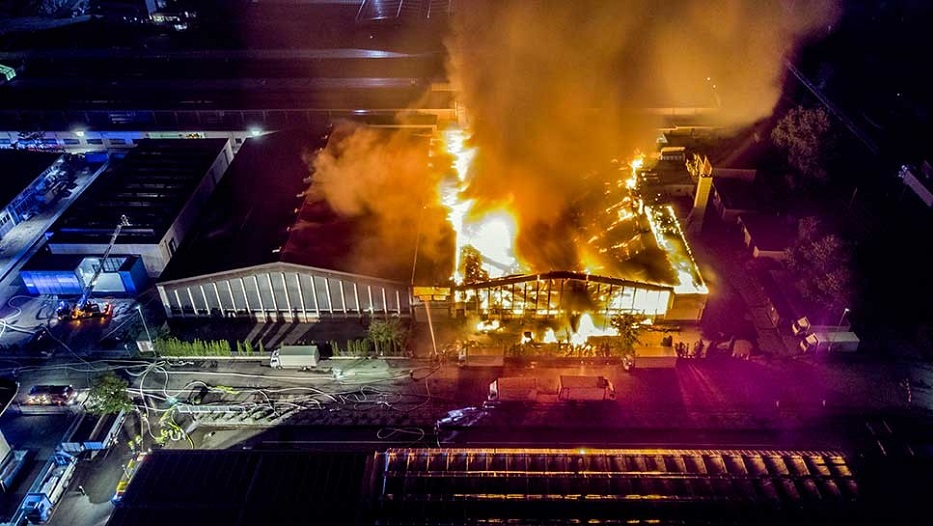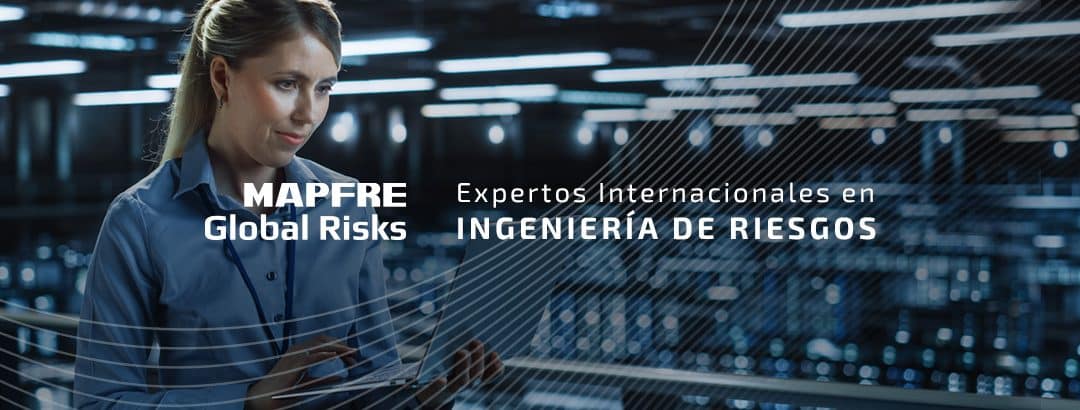admin | 14/11/2019
Fires can have devastating consequences on major infrastructure and are one of the main reasons for financial loss in the industrial sector. Both the regulatory framework and professionals in the industry have made significant progress in the mechanisms to prevent and fight fires, and buildings are increasingly better equipped and developed in this regard. This battle isn’t reactive; today there are multiple interesting lines of research into passive and active fire protection.
Guidelines frameworks set out the minimum requirements that infrastructure must fulfill to ensure proper safety and habitability These include fire risk. Specifically, in Spain, the “Technical Building Code” has a Basic Document that establishes a number of rules and procedures that put safety requirements into practice. In order to prevent and combat fires, as well as reduce risk for users, there are a number of lines of research and development implemented in the phases of infrastructure design, construction, maintenance, and operation. Their conclusions can be far-reaching, since, in addition to the potential for damages to people and the environment, fire is one of the top reasons for financial loss in the industrial sector and for commercial establishments.
Active fire protection
Early localization can be the difference between a minor incident and a large claimable event. Active fire protection systems (AFP) comprise the equipment and systems installed to detect and extinguish fires. The location of these resources, including detectors, extinguishers, and hydrants, is crucial to fire extinguishing and user safety. To select the right points, structural planning is required beginning in the building design phase, where these safety measures can be incorporated more easily and at a lower cost. Especially in large cities, where intense commercial activity coexists with a large population, having a firm and coordinated strategy to create and maintain safe infrastructure is vital.
 The implementation of these solutions is much easier to carry out in so-called smart buildings, whose systems facilitate the integration of technologies that have a significant impact on fire response times and the effectiveness of that response. In order to establish a holistic system that covers the entire infrastructure, and even neighboring buildings, BIM (building information modeling) technology has become instrumental. It facilitates both the safety system planning and management phases. Fire behavior and user evacuations can be simulated in the digital twins generated by this modeling system as well.
The implementation of these solutions is much easier to carry out in so-called smart buildings, whose systems facilitate the integration of technologies that have a significant impact on fire response times and the effectiveness of that response. In order to establish a holistic system that covers the entire infrastructure, and even neighboring buildings, BIM (building information modeling) technology has become instrumental. It facilitates both the safety system planning and management phases. Fire behavior and user evacuations can be simulated in the digital twins generated by this modeling system as well.
Another line of research being looked into with regard to fire detection is marked by IoT (Internet of things), which is aimed at interconnecting devices and everyday objects through a public or private communication network. In particular, it is being implemented on a number of detectors (e.g., smoke, temperature or visual detectors) that communicate with each other through wired or wireless networks, setting off alarms and reaction systems: evacuation plans, irrigation systems, and the corresponding warnings (to occupants or fire departments). It’s been taken a step further, and in cases recorded in large areas, tests have been conducted with the connection of thermal sensors integrated into drones able to generate information in real time about areas that are difficult to reach or see.
This kind of method has also been applied to forest fires. One example of this can be found in the R&D+i department of Red Eléctrica de España. Fully aware of the danger involved in power transmission, the entity is developing PRODINT, a system of sensors installed in high voltage transmission network infrastructure that uses radiation data analysis to warn of a fire more quickly, thereby reducing damages.
This optimization of fire detection and alert systems has considerably improved fire dynamics and behavior prediction models. Predictive models are based on inverse research, i.e., on finding out the causes through a detailed study of the consequences. Since fire logging and guidelines have been optimized, it is easier to create models that indicate the behavior of potential fires. This powerful knowledge on the spread of fires and human behavior is fundamental when planning evacuation routes.
The structure of an IoT firefighting system

Source: International Fire Protection
Passive fire protection
These are the mechanisms that aim to stop fires and mitigate their effects, facilitating the evacuation of people and the action of emergency services. Passive fire protection (PFP) measures do not require active intervention to function properly, since they are based in the design phase and integrated into the infrastructure. They are therefore founded in the building plan. Again, modeling technologies, such as BIM and mapping systems, notably facilitate this work both for the contractor and for the project managers.
These passive measures aim to contain a fire as quickly as possible within the smallest amount of space possible. There are several types:
– Structural, such as intumescent coatings that expand fire resistance in terms of time and intensity. These include concrete and plaster, which have poorer heat conductivity than other materials.
– Compartmentalization, to confine the fire by building structures that hinder its spread (dividers, slabs, expansion joints in the walls, firewalls, suspended ceilings, etc.).
– Fireproofing or insulation using fire-resistant components or additives (both in the manufacturing phase and subsequently) to improve its reaction to flames.
– Smoke control systems, which compartmentalize and release smoke to ventilate evacuation spaces and delay structural heating.
– Evacuation. With regard to signage, the starting point is the type of material used, which must be much more resistant and protected from all kinds of threats. In terms of technical innovation, the turning point is marked by smart guiding and evacuation systems, whose routes are determined based on the behavior of the fire. Alongside the ambition of emerging technologies, notable success has been seen in wireless mine evacuation systems.
At the service of professionals
Technology has also been critical for professions with strong tradition, as is the case for firefighters. One of the tools that has optimized their job is geographic information systems, or GIS, a map support system able to integrate a large amount of data from a particular area. Thanks to these maps, a detailed (and multi-layer) study can be made of the terrain and of the potential actions of emergency services in the event of an incident.
A recent example can be found in the Community of Madrid, where the Directorate-General of Citizen Protection (which reports to the Regional Ministry of the Presidency) decided to study the reaction times and travel conditions for firefighters in the province. To do this, they created a complete GIS, through which they learned that more than half a million residents of Madrid live too far from fire stations. Thanks to this report, three medium-sized stations were commissioned to be built in Cobeña, Loeches, and Villanueva de la Cañada. Four additional small stations will be built in Villarejo de Salvanés, Soto del Real, Lozoya, and El Molar.





